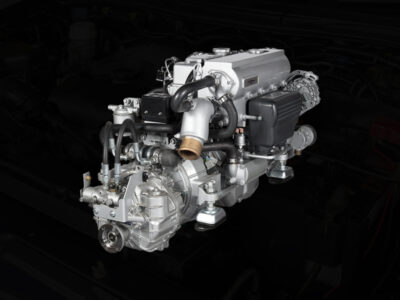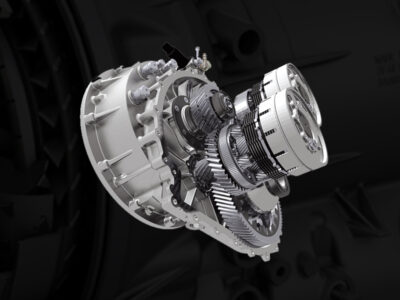
When considering the purchase of a used car engine, it’s crucial to approach the process with extra caution. Unlike buying a car where you’re concerned with the overall condition of the vehicle, buying a used engine involves assessing the core component that powers the car: the engine itself.
Engines are often the most expensive part of a vehicle to repair or replace, and any issues with the engine could result in significant financial consequences. This is where used car engine warranties and understanding the inspection process, including necessary tests like the PUC (Pollution under Control) test, play a crucial role in protecting your investment.
In this article, we’ll guide you through the essential aspects of buying a used engine, including what to check before purchase, how to ensure you are covered by a warranty, and why performing a PUC test is critical.
1. Why Buying a Used Car Engine Can Be a Smart Choice?
Replacing a car engine with a used one can be a cost-effective solution when the original engine fails or shows significant wear. New engines are expensive, often costing thousands of dollars, whereas used engines can provide a much more affordable alternative. However, purchasing a used engine comes with risks, particularly if the engine’s condition isn’t thoroughly checked. Before you make your decision, there are several key factors to evaluate, starting with the engine’s condition.
2. Key Factors to Check When Buying a Used Car Engine
When considering a used car engine, it’s essential to ensure that it will provide reliable performance for the long term. Here are the critical factors to check:
a. Engine Condition and Inspection
The condition of the engine is the most important factor when buying a used engine. Even if an engine looks clean from the outside, internal issues might not be immediately apparent. Here’s how you can assess the engine:
- Visual Inspection: Start by visually inspecting the engine for any obvious signs of damage, such as oil leaks, rust, or cracks. Look for any signs that the engine has been in an accident or mishandled.
- Engine History: Ask for the engine’s history. Has it been involved in an accident? Was it part of a salvage vehicle? Was it regularly maintained? Knowing the engine’s past can give you a better idea of its overall reliability.
- Mileage: Check the engine’s mileage to understand how much it has been used. High-mileage engines can be riskier, although some engines are built to last longer than others.
b. PUC (Pollution under Control) Test
The PUC test is an important part of any engine inspection, particularly when buying a used engine. This test checks the emissions of the engine to ensure that it complies with environmental regulations. The PUC test measures the level of pollutants, including carbon monoxide and hydrocarbon emissions, and ensures that the engine runs efficiently and does not cause excessive pollution.
- Why the PUC Test Matters: A used engine that fails the PUC test could mean that it has internal damage, such as problems with the combustion process or the exhaust system. This failure could lead to increased emissions, higher fuel consumption, and more costly repairs down the line.
- How to Perform the PUC Test: You can perform a PUC test on a used engine at an authorized testing center. If the engine fails the test, it’s a red flag that the engine may not be in good condition. If it passes, it’s a good indication that the engine is operating within legal emission limits and is likely in better condition.
c. Compression Test
A compression test is another important diagnostic tool used to assess the health of a used engine. This test measures the pressure inside the engine’s cylinders when the engine is turned over. A good engine should have consistent compression across all cylinders.
- Why it’s important: If the compression is low in one or more cylinders, it can indicate problems like worn-out piston rings, leaking valves, or a cracked engine block. These issues can lead to poor engine performance and costly repairs.
- How to Perform It: A mechanic or experienced can perform a compression test using a tool that screws into each cylinder to measure the compression level.
Also read: Used or Rebuilt Axle: How to Make the Best Decision for Your Truck
d. Oil and Fluid Levels
Before buying a used engine, always check the oil and other essential fluids. The engine oil should be clean and at the correct level. If the oil is thick, dark, or dirty, it could indicate that the engine has not been maintained properly, or that it has excessive wear. Similarly, check other fluids like coolant, transmission fluid, and brake fluid for proper levels and cleanliness.
- What to look For: Dirty or low oil levels may indicate the engine has been poorly maintained. On the other hand, clean and properly maintained fluids suggest the engine has been taken care of.
e. Listen for Unusual Noises
Once you’ve installed the used engine, turn it on and listen closely for any unusual sounds. If you hear knocking, tapping, or grinding noises, these could be signs of internal engine problems, such as issues with the bearings, pistons, or timing mechanisms. A healthy engine should run smoothly and quietly.
3. Understanding Warranties for Used Car Engines
Buying a used engine can save you money, but it also introduces the risk of hidden defects or future mechanical failures. This is where used car engine warranties come into play. Warranties for used engines provide protection in case the engine fails after purchase.
What Does a Used Engine Warranty Cover?
Used engine warranties vary depending on the seller and the condition of the engine, but they generally cover key components and can provide significant peace of mind. Typical coverage includes:
- Engine Block and Major Components: Warranties typically cover critical engine components, such as the engine block, cylinder heads, pistons, and crankshaft.
- Labor Costs: Some (not all) warranties include coverage for labor, which can be a significant part of engine repair costs. This ensures that if something goes wrong with the engine, you won’t have to pay for labor separately.
- Limited Coverage Period: Many used engine warranties offer coverage for a limited time or mileage. Common terms range from 30 days to one year, but some extended warranties may offer longer coverage.
What’s Not Covered by Used Engine Warranties?
While warranties are designed to protect you, it’s important to note that not all engine issues will be covered. Typical exclusions might include:
- Wear and Tear: Parts like gaskets, seals, and belts are often not covered under warranty, as they are subject to natural wear and tear.
- Improper Use or Maintenance: If the engine fails due to misuse or lack of proper maintenance (e.g., failure to change the oil regularly), the warranty may be voided.
- Aftermarket Modifications: If the engine has been modified with aftermarket parts (e.g., performance upgrades), the warranty might not cover any resulting issues.
Transferability of Warranties
If you’re buying a used engine from a third-party seller or a salvage yard, make sure to check if the warranty is transferable. Some warranties are only valid for the original buyer, meaning if you buy a used engine from a previous owner, you may not be able to transfer the warranty to yourself. Always request warranty documentation in writing, and ensure the terms are clear before you proceed with the purchase.
4. Final Tips before Purchasing a Used Car Engine
Here are a few additional tips to help you make a smart decision when purchasing a used car engine:
- Research the Engine’s Make and Model: Some engines are known for their durability, while others may have a history of issues. Do your research on the engine’s make and model to ensure it is reliable and well-suited to your needs.
- Choose Reputable Sellers: Always buy from reputable sellers or authorized dealers who offer warranties and provide accurate engine histories. Avoid buying from individuals without clear documentation or warranty options.
- Get an Expert Opinion: If you’re unsure about the engine’s condition, consider getting an independent mechanic to inspect the engine before making the purchase. A professional inspection can uncover issues that may not be immediately visible.
- Understand the Cost of Installation: Don’t forget to factor in the cost of installing the used engine. Engine replacement can be labor-intensive and costly, so make sure to budget for this when considering your overall investment.
Conclusion
Purchasing a used car engine can be an economical choice, but it requires careful consideration and due diligence. By thoroughly inspecting the engine’s condition, performing essential tests like the PUC and compression tests, and understanding the warranty coverage, you can minimize risks and ensure you’re getting a quality engine that will serve you well. Always remember that the engine is the heart of the car, and investing time in assessing its condition will pay off in the long run, providing you with a reliable and efficient vehicle.
At A111 Auto Parts, we specialize in offering high-quality used engines with reliable warranties. Trust us to deliver cost-effective, durable engine solutions. Get in touch with our expert representatives today for the best deals on dependable used car engines with comprehensive warranties!





